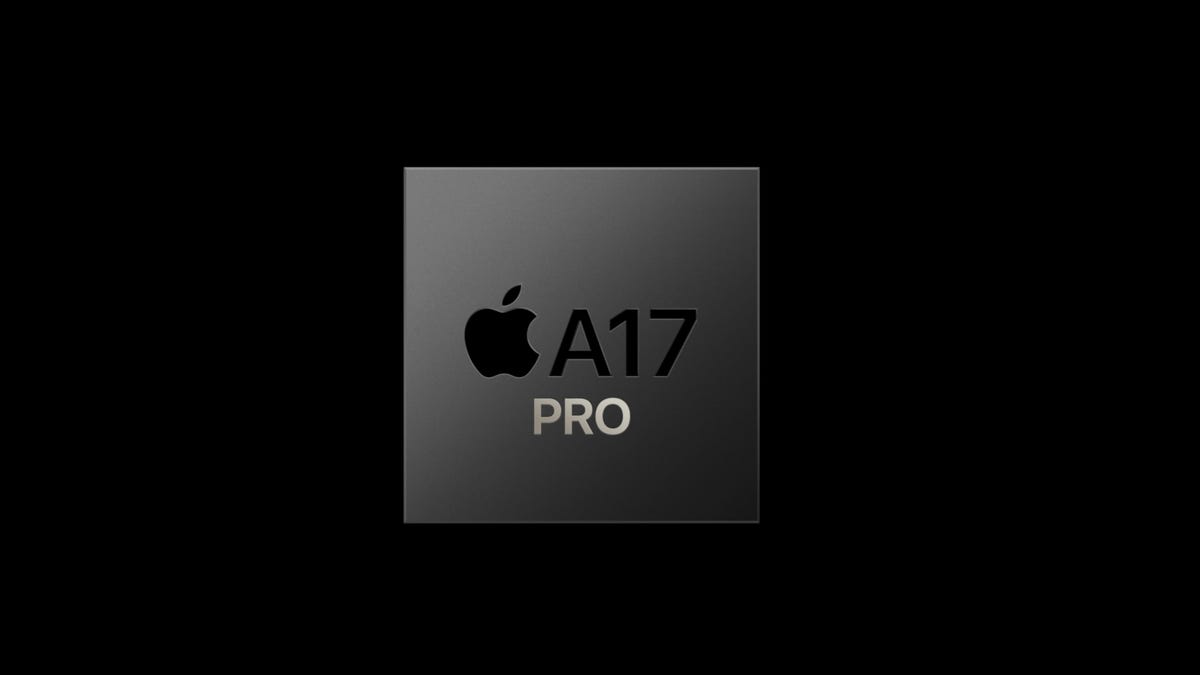Apple A17 Pro: The New Chip Brain in the iPhone 15 Pro, Pro Max

Continuing last year’s two-tier approach, Apple is reserving its fastest new processor, the A17 Pro Bionic, for its iPhone 15 Pro and Pro Max smartphones. The new iPhone 15 and 15 Plus get an upgrade as the A16 Bionic trickles down from last year’s iPhone 14 Pro models to the mainstream phones.
Apple touted the A17 Pro as the “fastest chip ever on any smartphone,” and judging by years of speed tests, the company probably is right. iPhones typically are at least a year ahead of competing Android phones in raw processor speed. Apple’s processor clout has let it differentiate its products from rivals, add features it needs, support iOS software upgrades for years and maintain its premium pricing.
The A17 Pro is Apple’s first processor built with TSMC’s 3-nanometer process, a new manufacturing technique with smaller features, better performance and higher efficiency. Competitor MediaTek touted its use of TSMC’s 3nm process earlier in September, but its Dimensity mobile processor won’t reach high-volume manufacturing until 2024.
Using new chip manufacturing technologies is a key way to get ahead of rivals, since the new methods accommodate more circuitry elements called transistors and therefore more features. The A17 Pro has 19 billion transistors, up from 16 billion transistors in the A16. For a little historical comparison, the A15 has 15 billion transistors, the A14 11.8 billion and the A13 8.5 billion.
Watch this: iPhone 15 Pro and Pro Max: First Look
As before, the A17 Pro has six CPU cores, the main brains. That consists of a pair of high-performance cores, now 10% faster than last year, and four efficiency cores. The latter handle much of the phone’s work, which doesn’t always need top speed but does always need to respect the phone’s limited battery capacity. Compared with unnamed rivals, the efficiency cores offer three times more performance per watt, Apple said.
The chip’s neural engine, which handles some AI workloads like transcribing speech to text, is up to twice as fast. It can crank out up to 35 trillion operations per second, which is about double last year’s 17 TOPS. The extra speed can keep more machine learning chores on the iPhone, keeping your personal data out of the cloud. It powers features like more accurate autocorrect, blurring the background in a portrait photo, creating a personal voice for those with speech loss. For gamers, it helps to power a new MetalFX technology that can increase video game graphics detail without hitting your battery as hard as increasing the resolution.
The A17 Pro has dedicated engines used specifically for iPhone 15 Pro features such as the ProRes video format. It adds support for the newer AV1 video format, which should boost efficiency for video sites like YouTube that use it. Also on board is an engine for the iPhone’s ProMotion and always-on display.
One region of the A17 Pro is devoted to USB, letting the iPhone transfer data at up to 10Gbps over its new USB-C port. That’s a big deal for making the port useful, for example, for transferring video to a laptop or shooting 4K 60fps ProRes video that’s stored on an attached external storage device.
The new GPU is another highlight, benefiting from what Apple called its “biggest redesign in the history of Apple GPUs.” It has a six-core design that’s up to 20% faster while also being more energy efficient for sustained performance while gaming. And for the first time, the A17 Pro has hardware-accelerated ray tracing, which helps give light and reflections greater realism in games for a more immersive experience.
The trend reflects how chipmakers are building more and more abilities directly into silicon, an approach that offers better features, performance and battery life if done well. As chips get larger, though, they get more difficult to build. In some parts of the computing landscape, processors are being split into tightly connected “chiplets” that are less susceptible to manufacturing glitches.
For more from today’s Apple iPhone 15 event, check out everything Apple announced.
More from the Apple event
Source: CNET















